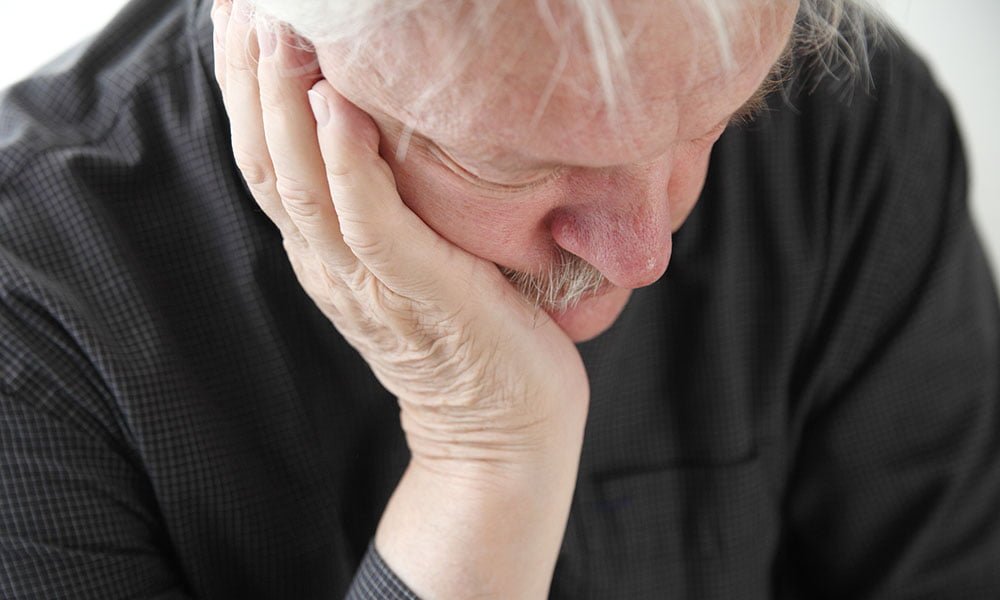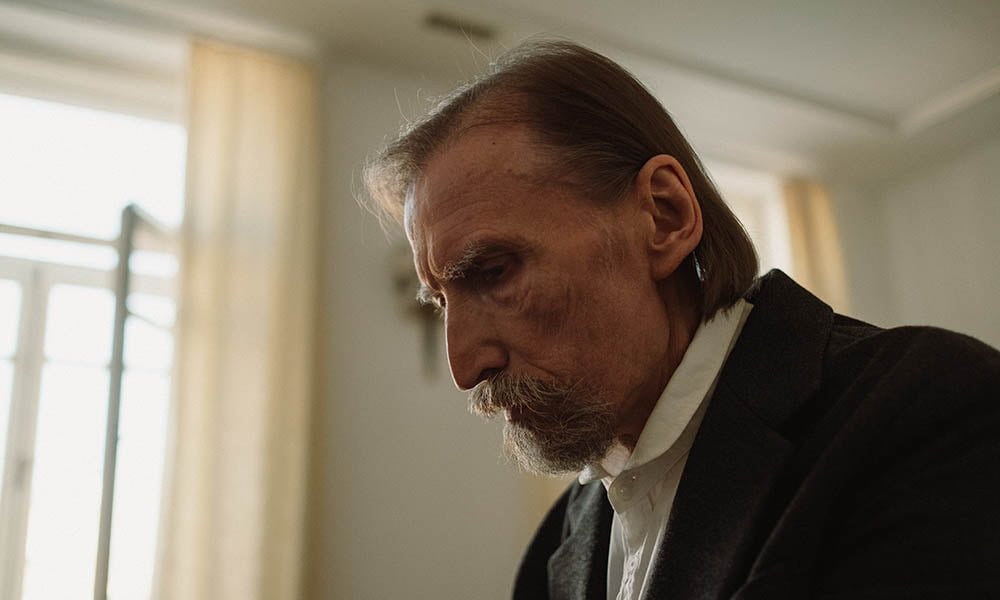Hallucinating is like dreaming. But contrary to dreams, hallucinations occur even when your eyes are wide open.
Hallucinations are characterized by false perceptions and events involving basic senses. A person experiencing this can perceive something to be there that is not.
An elderly person experiencing hallucinations can often feel agitated and frightened.
Hence, they should not be left alone. Family caregivers or members can accompany the elderly to provide comfort!
Types of Hallucinations
Hallucinations appear as abnormal perceptions among the senses of affected individuals.
Hence, it also comes in different forms:
- Auditory hallucination – The older adult patient may hear someone talking, inaudible sounds, or music playing. They can also hear tapping sounds or steps on the floor.
- Olfactory hallucination – Patients can experience sensitivity to the sense of smell. It can range from pleasant to pungent odors.
- Gustatory hallucination – This type of hallucination involves the sense of taste. In this case, the person can taste things that are not there. This is most common among epileptic patients.
- Tactile hallucination – The elderly experiencing this can perceive things through touch. There are times when they can feel insects crawling all over them.
However, the MOST VISUAL type of hallucinations experienced by older adults is visual hallucinations.
Visual Hallucinations
Visual hallucinations are characterized by seeing NON-EXISTENT objects, people, animals, and the like.
This phenomenon can occur due to a series of medical and neurological reasons.
Visual hallucinations can be classified into 2:
- Simple
- Complex
Simple visual hallucinations can involve seeing light flashes, lines, and patterns.
This may occur due to ocular impairments and other health conditions, like macular degeneration, migraine, seizures, tumors, and lesions.
On the other hand, complex hallucinations involve events, groups of people, animals, and scenery.
Several reasons can cause these, including:
- Delirium
- Dementia
- Charles Bonnet Syndrome
- Hypnopompic hallucinations
- Alice in Wonderland Syndrome
What Causes Sudden Hallucinations in the Elderly?

Different conditions can cause sudden hallucinations in the elderly person. But there are common reasons identified by experts that lead to hallucinations.
These risk factors include:
- Dehydration
- Sleep deprivation
- Kidney or liver failure
- Brain tumors or cancer
- Alcohol and drug abuse
- Anesthesia after surgery
- Mental illness (like schizophrenia and bipolar disorders)
- Other health conditions (Charles Bonnet Syndrome, Alzheimer’s disease, dementia with Lewy bodies, and the like.)
Visual Causes
The most common visual cause of hallucinations is Charles Bonnet syndrome.
Despite its commonality, the Charles Bonnet Syndrome remains underrecognized.
The patient can vividly describe hallucinations that occur under this condition.
How it happens is still uncertain. But, experts relate such a condition with the phantom limb sensation.
Neurological Causes
Migraines and seizures are the typical neurological causes of hallucinations in older adults.
Patients who experience such conditions often report having elemental hallucinations. This is where they see random lines, shapes, and colors.
Older adults who suffer from temporal lobe seizures may experience complex visual hallucinations where they see people and animals.
After Surgery
Hallucinations likely happen after a surgical procedure. It usually lasts for a few hours or days and eventually goes away.
Anesthetic drugs used during the surgery can cause a person to hallucinate. This is especially true when a person receives high doses of anesthesia.
That’s why it is also likely for people undergoing major surgical treatments to hallucinate.
Pain killers and other medications prescribed after surgery can also result in hallucinations among elderly patients.
UTI
Urinary Tract Infection (UTI) is an infection affecting the urethra, ureters, bladder, and kidney.
Common accompanying symptoms include urine discoloration, incontinence, and painful urination.
However, among older adults, symptoms can be much worse. It can have psychological effects, including visual hallucinations.
This possibly happens when the bacteria reach the upper urinary tract (bladder and kidney).
The infection consequently spreads through the bloodstream and affects the brain.
The elderly person is susceptible to such infection because the blood vessels in their brain tend to be weaker.
Dementia
Dementia is one of the most common causes of visual hallucinations among elderly patients.
Alzheimer’s disease-induced dementia causes visual hallucinations among patients. Around 18% of the elderly with this disease were reported to have experienced hallucinations.
Hallucinations occur in patients having dementia with Lewy bodies too.
Over 80% of patients were said to have complex visual hallucinations accompanying such a condition. And it usually lasts for days or months.
While Sleeping
There could be many reasons why hallucinations occur when a person is sleeping.
Typically, this phenomenon is caused by sleeping disorders or parasomnias.
Parasomnias are characterized by displeasing physical experiences that occur as a person enters sleep, while sleeping, or within sleep arousal.
Among older adults, hallucinations appear during sleep paralysis. It is also connected to Rapid Eye Movement (REM) sleep behavior disorder.
Sleep Paralysis and Hallucination
Sleep paralysis is the inability to move or speak during the onset of sleep or a few seconds or minutes after waking.
In these cases, the person experience suffocation or a heavy on the chest.
It is also common for an individual to have vivid auditory, visual, and tactile hallucinations during sleep paralysis.
Sleep deprivation and irregular sleeping patterns are a few causes of sleep paralysis.
REM Sleep Behavior Disorder
REM sleep behavior disorder (RBD) is a condition where the person physically acts out their dreams and nightmares through sounds, voices, and leg or arm movements.
This disorder can be classified into two forms: idiopathic and secondary.
Older adults who experience idiopathic RBD are later diagnosed with neurodegenerative conditions, including Parkinson’s disease and dementia with Lewy bodies.
Among older adult patients with idiopathic RBD, hallucinations appear mostly in those diagnosed with dementia with Lewy bodies in a few months or years.
Few of the primary symptoms seen among them include:
- Acute episodes of hallucinations, agitation, and delirium after elective surgery
- Subacute episodes of visual hallucinations and delusions
- Isolated visual hallucinations like seeing bugs running around
Medication
Alcohol abuse and the use of illicit drugs cause hallucinations.
However, prescription drugs and over-the-counter medications can also cause vivid visual hallucinations among elderly patients.
Most medications that would result in hallucination are over-the-counter medications like anticholinergic and dopaminergic agents, which include dopamine agonists and levodopa.
Other commonly used drugs that could cause hallucinations in the elderly are:
- Corticosteroids
- Opioids
- Antibiotics
Drug-to-drug reactions can also cause visual hallucinations. The number of medications the older adult takes might result in adverse reactions like a hallucination.
9 Medical Conditions That Can Cause Hallucinations in the Elderly

Hallucinations can happen due to a number of reasons.
In most cases, hallucinations are associated with several medical conditions among older adults.
It can result from mental disorders or conditions affecting the nervous system.
Here are a few health-related issues that can cause the elderly to hallucinate:
1. Schizophrenia
Schizophrenia is a psychotic disorder involving the abnormal interpretation of reality.
Patients with schizophrenia can experience several symptoms, including delusions, disoriented thinking and behavior, and hallucinations.
Auditory hallucinations are the most common type experienced by patients with schizophrenia.
They can hear sounds and voices similar to the experiences of psychologically normal people.
Among schizophrenic individuals, over 60-80% are experiencing auditory hallucinations. On the other hand, 25-50% of patients have visual hallucinations.
2. Delirium
Delirium involves the disturbance of the mental capabilities and cognition of older adults.
As a result, patients experience a reduced sense of awareness of their environment, changes in behavior and way of thinking, and emotional disturbances.
Additionally, the elderly who suffer from delirium can also experience auditory and visual hallucinations. This is most common among patients who have hyperactive delirium.
Delirium can be a result of certain underlying medical conditions. However, it can also be a result of substance withdrawal.
The severe withdrawal from alcohol is called delirium tremens.
3. Dementia with Lewy Bodies
Lewy body dementia is the SECOND MOST COMMON degenerative dementia following Alzheimer’s disease.
It is characterized by cognitive impairment, accompanied by reduced alertness, parkinsonism, symptoms similar to a few psychiatric disorders, and frequent hallucinations.
Over 80% of older patients with dementia with Lewy bodies are experiencing complex visual hallucinations.
These vivid false perceptions can last for a few days or even months.
4. Parkinson’s Disease
Parkinson’s disease is a psychological disorder characterized by involuntary bodily movement. This may include:
- Shaking
- Stiffness
- Poor motor coordination and balance
Hallucinations among the elderly with this disease occur due to medication. This is not typically a sign of a person suffering from a psychotic disorder.
Patients with this disease commonly experience visual hallucinations in DIM LIGHT areas.
These can be seen in the peripheral vision as light flashes or shadows, people, and animals.
Some people have retained insights while they experience hallucinations. This means that they are aware that what they’re seeing or hearing is NOT REAL.
However, as the disease progresses, patients lose such insights.
5. Charles Bonnet Syndrome
Charles Bonnet Syndrome is another common cause of complex visual hallucinations in the elderly.
Hallucination, in this case, is characterized by vivid and elaborate visual hallucinations among persons with visual impairment.
Among patients with visual impairment, 10-15% were reported to have Charles Bonnet’s Syndrome.
It is believed that this syndrome is common among the elderly because there is a large portion of visually impaired individuals in this population.
Typical conditions that cause the Charles Bonnet Syndrome are eye disease, including macular degeneration, glaucoma, and cataract.
Charles Bonnet hallucinations can involve vivid images of people, animals, sceneries, and events.
Although Charles Bonnet Syndrome is common in individuals with visual impairment, it can also occur among 3.15% of psychogeriatric patients diagnosed by general practitioners.
6. Seizures
When a patient experience a seizure, their cerebral subsystem is affected.
This, in turn, causes varied symptoms, including illusions, delusions, and hallucinations.
Seizures can cause the elderly to have complex auditory and visual hallucinations. It can also result in hallucinatory emotional states or visuospatial hallucinations.
7. Migraines
A migraine is a neurological condition resulting in throbbing pain, numbness, and visual changes.
In the case of patients with migraine, hallucinations can be rare.
However, visual hallucinations can occur among patients with basilar or hemiplegic migraine.
A person with hemiplegic migraine can have visual hallucinations later in the migraine attack. This lasts within a few hours or days.
Visual hallucinations can happen during migraine attacks because the visual cortex is activated. Nerve cells can also be damaged in the long run.
Auditory and olfactory hallucinations can also occur with migraine.
An altered or sensitive sense of smell is actually common among patients with migraine. It affects bout 95% of people having this condition.
8. Drug Effects
Abuse of alcohol and recreational drugs can also stimulate visual hallucinations among the elderly.
Such instances could be less common in older adults than in younger people. However, this can still happen at home or in care facilities.
Illicit drugs that are known to cause visual hallucinations include:
- cocaine
- cannabis
- phencyclidine
- hallucinogens
- amphetamines
9. Creutzfeldt-Jakob Disease
Creutzfeldt-Jakob Disease is a neurodegenerative disease characterized by character changes, visual impairment, and rapid deterioration of cognitive functioning.
It can also show the rapid progression of dementia.
Hence, visual hallucinations can also occur among patients suffering from this disease.
This disease causes death among 90% of patients after a year.
Can Dehydration Cause Hallucinations in the Elderly?
To shortly answer your question, yes, dehydration can sometimes cause elderlies to hallucinate.
This likely happens when dehydration is prolonged.
Dehydration can happen when the body does not receive enough amounts of fluids.
This most commonly occurs in extremely hot weather or during intensive physical exercise.
Among the elderly, symptoms of dehydration include:
- Lethargy
- Headaches
- Hallucinations
On the other hand, complications of prolonged dehydration may include:
- Confusion
- Delirium
- Seizures
- Kidney failure
- Swelling of the brain
Is It Common for the Elderly to Hallucinate?
Hallucinations can occur due to various reasons.
It can due to underlying medical conditions, medications, or lifestyle.
Due to the elderly’s old age, they are likely to be susceptible to diseases and conditions that could cause hallucinations.
Certain diseases can affect the cognitive function of the elderly and cause them to experience hallucinations.
Treatment for Elderlies With Hallucinations

Given that various reasons cause hallucinations, proper diagnosis before treatments is given utmost importance.
Before treatment is determined and administered, assessments can be done by your healthcare providers.
The things that they assess and observe include:
- Mental health issues
- Retention insight during a hallucination
- Cognitive decline and personality changes
- Medical, psychological, and neurologic history
- Recent medical conditions and changes in medication
- State of the patient when experiencing hallucinations
- Accidents that can cause head injuries or head trauma
- Time and location where the patient experiences hallucinations
After the assessments are made, a treatment plan is devised to manage hallucinations. It can either be pharmacological or non-pharmacological methods.
Pharmacological Treatment
Pharmacological treatment is necessary for patients who experience distressing hallucinations.
This can also help manage an individual who exhibits violent behavior.
Among the elderly, medication can help in handling visual hallucinations.
However, this can’t totally eradicate hallucinations. It can only manage the emotions of the patient.
In treating visual hallucinations, neuroleptic medications are mainly used by healthcare providers.
However, seniors who have dementia with Lewy bodies can be sensitive to the side effects of neuroleptic medicine.
Antipsychotic medication can help in managing distressing hallucinations.
Non-Pharmacological Treatment
Health experts most commonly prescribe non-pharmacological treatments for managing visual hallucinations.
Such methods are ideal for the elderly to avoid potential side effects that could harm them.
Those with Charles Bonnet Syndrome or dementia do not require intensive medical care.
However, it is important to educate their families and caregivers that such conditions don’t signify a person to be mentally ill.
Non-pharmacological treatment for visually impaired patients includes removing cataracts, improving lighting, and wearing corrective lenses.
Reducing social isolation can also help patients having visual hallucinations.
This method is found to be effective among reclusive individuals.
Symptoms of Hallucinations
Oftentimes, symptoms of hallucinations can be difficult to distinguish from other psychotic symptoms.
Episodes of hallucination can also go unnoticed by people surrounding the older adult. It has to be severe for someone to recognize an episode of hallucination.
Signs that you can use to determine if the elderly are hallucinating include:
- Hearing, seeing, smelling, or tasting non-existent things
- Changes in personality and behavior
- Confusion and forgetfulness
- Social isolation
Prevalence of Hallucinations in the Elderly
There are not many clinical and neurobiological insights on the prevalence of hallucinations in the elderly.
Hence, it is unclear if elderly hallucination prevalence increases or decreases over time.
However, a study showed that literature indicated a 0.4% to 37% prevalence rate of hallucinations among the elderly.
Such numbers depend on the duration of the hallucination (month-long vs. lifetime). The prevalence rate increases as time passes.
But, more research is needed to investigate hallucinations among the elderly.
The investigation has become difficult for experts due to underreporting of cases. This is because older adults fear public stigma and ageism.
That’s why you must make the elderly feel safe sharing their experiences to encourage self-reporting of elderly hallucination cases.
Things to Do When an Elderly Hallucinates
When you spot signs of hallucinations in an older adult, call for emergency services immediately.
Doctors can perform assessments for the patient. And they can also have time to observe and monitor them closely.
Once the cause is determined, a treatment plan will be made for the patient to manage hallucinations.
Medication can be administered to calm the patient and ease agitation.
Medical practitioners can also help shift the patient’s attention from hallucination to reality.
Conclusion
Hallucinations among the elderly can be common. However, it can be difficult to distinguish its causes in one glance.
It is important to seek professional help to know if the hallucination results from mental health concerns, certain disorders or diseases, or whether the person is developing dementia.
It is also important to recognize such conditions among the elderly so they won’t fear public stigmatization.
This does not only make the older adult safe and secure. But it also helps health experts to know better about the prevalence of hallucinations among the elderly.



